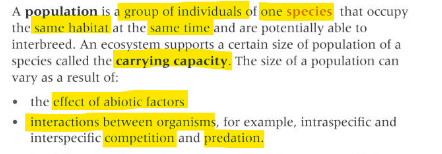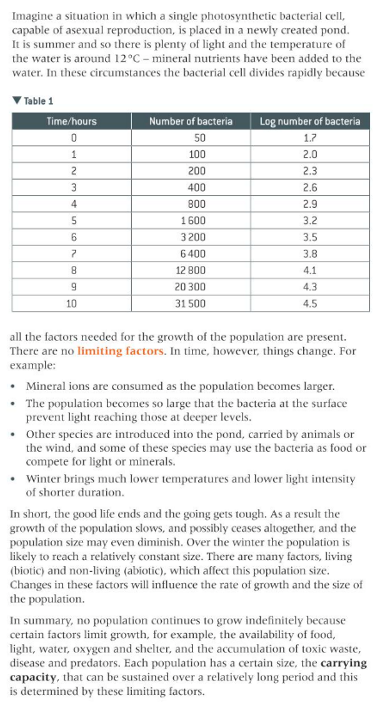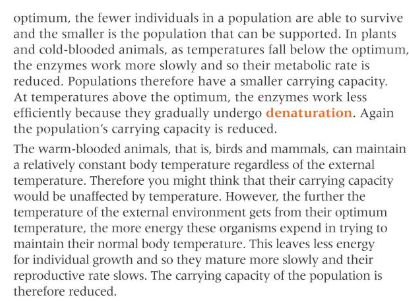19.1: Populations and ecosystems and variation in poluation size 19.2
1/13
There's no tags or description
Looks like no tags are added yet.
Name | Mastery | Learn | Test | Matching | Spaced |
|---|
No study sessions yet.
14 Terms
What is ecology?
Ecology is the study of the inter-relationships between organisms and their environment. The environment includes both living and non-living factors (biotic and abiotic factors).
Ecosystems:

Populations

Carrying capacity
The certain size of population of a species
Community
A community is defined as all the populations of different species living and interacting in a particular place at the same time.
Habitat
A habitat is the place where an organism normally lives and is characterised by physical conditions and the other types of organisms present.
Ecological niche
A niche describes how an organism fits into the environemt. A niche refers to where an organism lives and what it does there. It includes all the abiotic and biotic conditions to which an organism is adapted in order to survive, reproduce and maintain a viable population. Some species may appear very similiar, but their nesting habits or other aspects of their behaviour will be different, or they may show different levels of tolerance to environmental factors, such as a pollutant or a shortage of oxygen or nitrates. No two species can occupy exactly the same niche. This is known as the competitive exclusion principle.
Competitive exclusion principle
No two species can occupy exactly the same niche.
Population size:

Abiotic factors: temperature
Temperature: Each species has a different optimum temperature at which it is best able to survive.

Abiotic factors: (which influence the size of a population)
Temperature
Light
pH
Water and humidity
Abiotic factors: light

Abiotic factors: pH

Abiotic factors: Water and humidity
